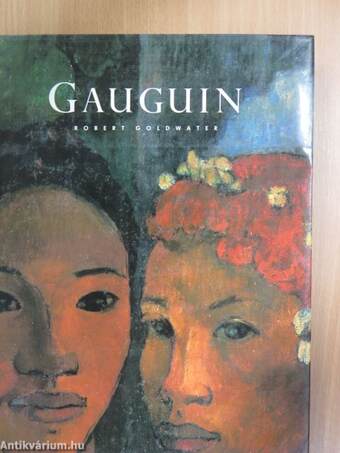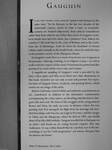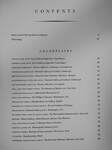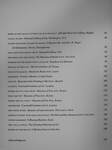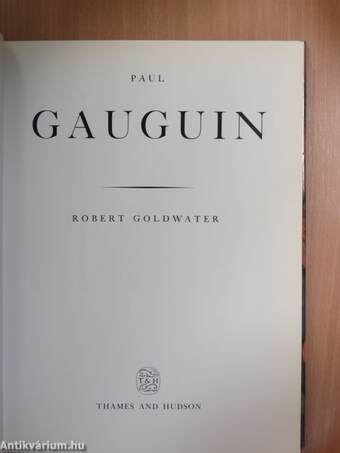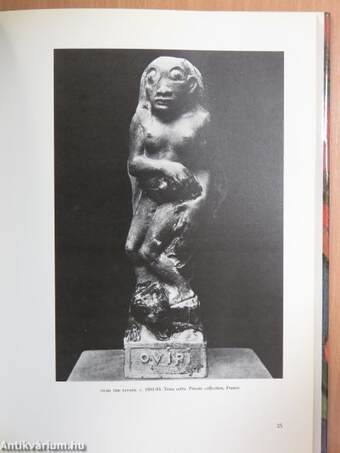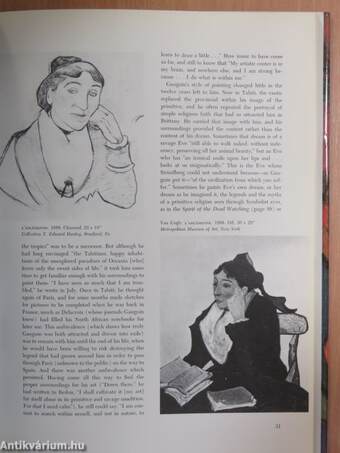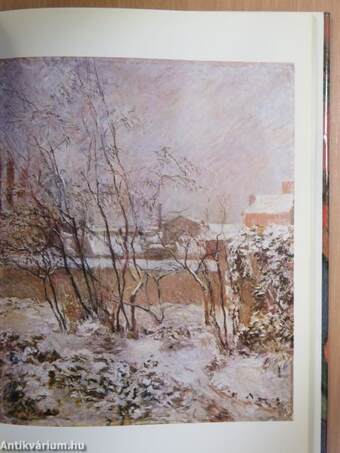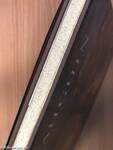1.117.292
kiadvánnyal nyújtjuk Magyarország legnagyobb antikvár könyv-kínálatát
Paul Gauguin
| Kiadó: | Thames and Hudson Ltd. |
|---|---|
| Kiadás helye: | London |
| Kiadás éve: | |
| Kötés típusa: | Vászon |
| Oldalszám: | 126 oldal |
| Sorozatcím: | |
| Kötetszám: | |
| Nyelv: | Angol |
| Méret: | 31 cm x 23 cm |
| ISBN: | 0-500-08024-0 |
| Megjegyzés: | Színes és fekete-fehér reprodukciókkal. |
naponta értesítjük a beérkező friss
kiadványokról
naponta értesítjük a beérkező friss
kiadványokról
Fülszöveg
Gauguin
In his own words, paul gauguin 'painted and dreamcd at the same time.' Yet he forecast, in the last two decades of the nineteenth century, much of what is basic to twentieth-century art. Painted subjectively, from what he remembered rather than from what he saw before him, much of Gauguin's work, in its simple lines and rich colour, has a 'primitive' look. Indeed, his wanderer's life took him to the coast of Brittany and to the Carib-bean isle of Martinique, both far from the heartland of French culture, and eventually to the South Pacific, where he ended his days in the primitive society of the Marquesas Islands.
In Gauguin's work there is a strain of mysticism, too: it appears in his peasants—dancing, working, or in religious ecstasy—as well as in the seductive stances of the exotic Polynesians he painted and alsó portrayed in wood reliefs, terra cotta, and ceramic.
A magnificent sampling of Gauguin's work is provided by the forty colour plates and fifty-seven black... Tovább
Fülszöveg
Gauguin
In his own words, paul gauguin 'painted and dreamcd at the same time.' Yet he forecast, in the last two decades of the nineteenth century, much of what is basic to twentieth-century art. Painted subjectively, from what he remembered rather than from what he saw before him, much of Gauguin's work, in its simple lines and rich colour, has a 'primitive' look. Indeed, his wanderer's life took him to the coast of Brittany and to the Carib-bean isle of Martinique, both far from the heartland of French culture, and eventually to the South Pacific, where he ended his days in the primitive society of the Marquesas Islands.
In Gauguin's work there is a strain of mysticism, too: it appears in his peasants—dancing, working, or in religious ecstasy—as well as in the seductive stances of the exotic Polynesians he painted and alsó portrayed in wood reliefs, terra cotta, and ceramic.
A magnificent sampling of Gauguin's work is provided by the forty colour plates and fifty-seven black and white illustrations in this book. Included are not only several self-portraits but repro-ductions of Gauguin letters, woodcuts, and printing blocks, which round out our image of the artist.
Róbert Goldwater, noted scholar and authority on primitivism in art, contributed, in addition to the informative commentaries accompanying the colour plates, an absorbing introduction to Gauguin's life and work. We learn of the struggles of the young artist in Rouen and Paris, his early successes in Brittany (where his true painting style first emerged), his flight from his marriage, his trou-bled friendship with Vincent van Gogh in Provence, and his voyages to Tahiti and the Marquesas, where he died in 1903, one month short of his fifty-fifth birthday. Gauguin travelled far to find peace as an artist—and found an art setting beyond compare. But, says Goldwater, 'it was within himself that he searched, not in his sur-roundings; it was his "wild imagination", not nature, that gave him his themes and forms.'
With 97 illustrations, 40 in colour Vissza
Témakörök
- Idegennyelv > Idegennyelvű könyvek > Angol > Művészetek > Festészet
- Művészetek > Festészet > Korszakok, stílusok > XIX. század > Impresszionizmus
- Művészetek > Festészet > Idegen nyelv > Angol
- Művészetek > Festészet > Tanulmányok, összefoglalók > Külföldi
- Művészetek > Festészet > Albumok > Külföldi festők


